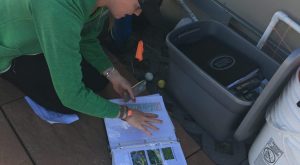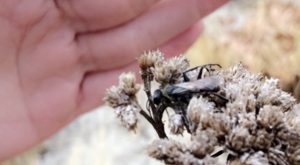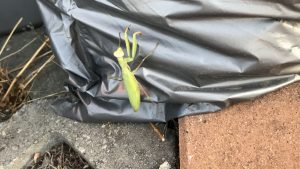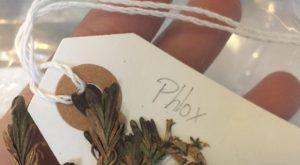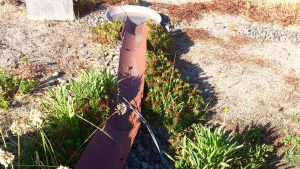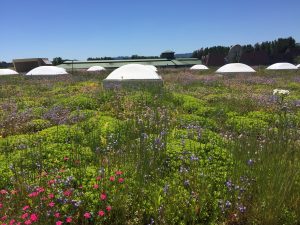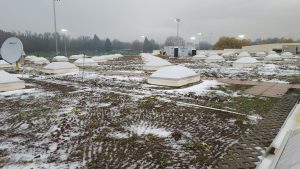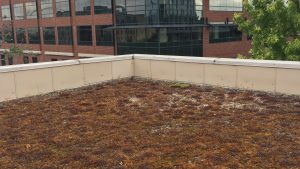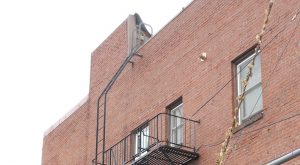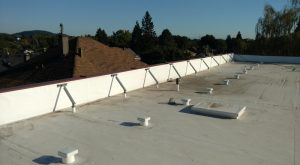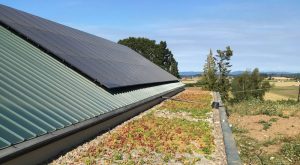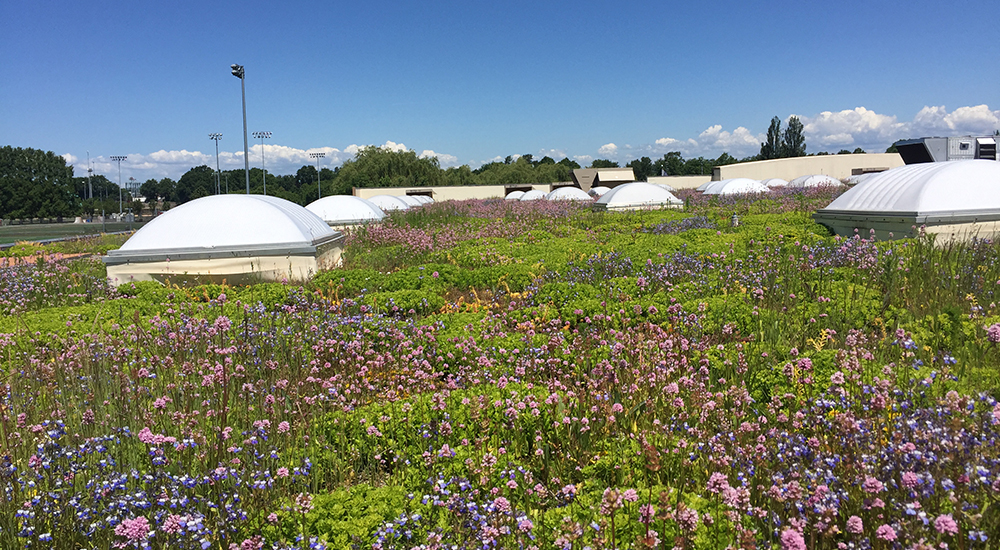
Walmart Ecoroof
The Walmart Supercenter on Hayden Island looks like another big box store from the parking lot, but more than 40,000 square feet of Walmart’s rooftop is planted in sedum, native grasses and flowers, and species planted specifically to draw bees, bugs, butterflies, and birds. Designed and built in 2013, the Hayden Island ecoroof is just one of four vegetated roofs Walmart has installed across the country as part of its climate goal to reduce 20 million metric tons of greenhouse gases.
During its first two years, the roof was maintained by SolTerra who also designed and planted the roof. Other partners included Portland State University (PSU) who secured a research grant to study the roof’s ecological impact, Portland Audubon, who monitored bird populations, and the City of Portland’s Bureau of Environmental Services who was measuring storm water runoff. In August 2016, Ecoroof Oregon was brought in to maintain the ecoroof. Our initial work included restoring the four roof zones (dry, sedum only, annuals, test area) to health and controlling invasive grasses and clover. As part of maintenance, all weeds are recycled on the roof in large gabions that allow for composting. Biannually, soil and water samples are collected from each roof zone and sent to the University of Pennsylvania for soil analysis, monitoring absorption, and gauging which species are surviving, and which are thriving.
PSU has constructed a green roof research site on the roof to better understand how green roofs work, and how they can be improved. The partnership with Walmart Stores, Inc. has enabled PSU’s Green Building Research Laboratory to secure grant funding to study the way the roof impacts air quality, filters rainwater, enhances energy efficiency, mitigates heat island issues, and improves wildlife habitat.
Ecoroofs Oregon’s first Walmart crew were graduates of Oregon Tradeswomen. In spring 2017, two PSU students joined the Ecoroof Oregon maintenance crew and spent their first year doing roof maintenance (weeding, harvesting and broadcasting sedum and perennial seeds), and documenting soil and species conditions. A grant from the National Science Foundation supported additional time sampling air particles above the green roof compared to above the white membrane roof. In 2018, a PSU graduate student who specializes in the study of mosses joined the team.
- Record keeping
- Identifying insects
- Praying mantis
- Documenting species
- Bird drinking station
- Spring perennials
- Winterscape Delta Park Walmart
